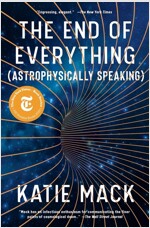
... the question of the fate of all existence is still an open one, and an area of active research in which the conclusions we draw can change drastically in response to very small tweaks in our interpretations of the data. In this book, we'll explore five possibilities, chosen based on their prominence in ongoing discussions among professional cosmologists, and dig into the best current evidence for or against each of them. (p. 12)
... The observable universe, encompassing everything we can see today, must have been contained within a much smaller, denser, hotter space. But the observable universe is just the part of the cosmos we can see now. We know that space goes on much farther than that. In fact, based on what we know, it's entirely possible, and perhaps probable, that the universe is infinite in size. Which means that it was infinite at the beginning too. Just much denser. (p. 21)
Truthfully, the whole timeline of the early universe is still very much an extrapolation and, I will readily admit, one that we shouldn't entirely trust. A universe that starts with a singularity and expands from there goes through an unimaginably extreme range of temperatures, from basically infinity at the singularity to the cool comfortable environment of the cosmos today, sitting at about 3 degrees above absolute zero. What we can do is make inferences about what physics would be like in all those environments, which is how we get the ordering I present in this chapter. And though the standard Big Bang theory of steady expansion from a singularity has some major problems (which we'll get to imminently), we can still learn a lot about how physics works by thinking about what might have happened if the standard theory is right. (p.35)